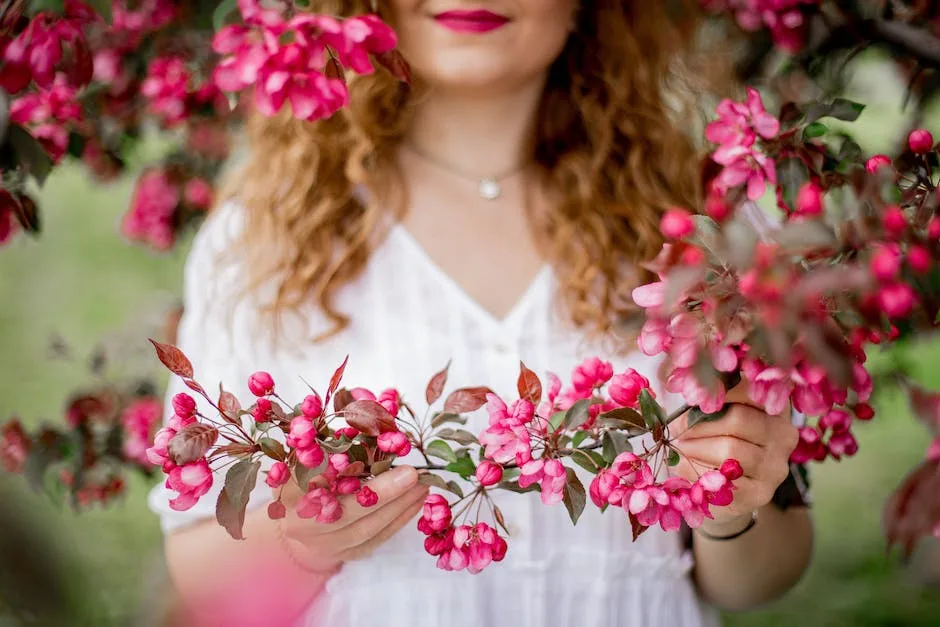How often do apple trees flower? This is a common question with a bit of a complicated answer. With the right conditions, most apple trees will flower every year. However, there are several reasons why a tree might not flower, including age, freeze damage, and disease.
No, apple trees do not flower every year.
Why is my apple tree not flowering?
It can take several years for a fruit tree to mature and produce flowers and fruit. The lack of flowers on a fruit tree is often due to the age of the tree. After planting, most dwarf and semi-dwarf apple trees don’t flower and bear fruit for 3 to 5 years. Standard apple trees may not bear fruit for 5 to 10 years. Fruit trees have to grow and mature before they are capable of flowering and fruiting.
Apple blossoms typically bloom anywhere from early spring to late summer. The earlier apple varieties like McIntosh, Gala, Honeycrisp and Fuji would be the first ones you see, and the later varieties like Macoun, Mutsu and Pink Lady will blossom later on in the summer.
Does apple trees produce every year
It’s interesting that some of my apple trees produce a huge crop one year, but almost nothing the next. It seems like they follow a two-year pattern, regardless of the weather conditions. I’m not sure why this is, but it’s definitely something to keep an eye on.
Bitter cold temperatures during mid-winter can kill flower buds resulting in no crop the following year. There are cultivar differences in susceptibility to winter temperatures. Biennial bearing Apple trees that produce a large crop one year will have few if any flowers and fruit the following year.
Do apple trees bloom every other year?
The apple tree is a fruit-bearing tree that is cultivated in many parts of the world. The fruit of the apple tree is the apple. The apple tree is a member of the rose family and is classified as a deciduous tree, meaning that it sheds its leaves annually.
Apple trees sometimes crop bi-yearly, known as biennial bearing, due to bad conditions or excessively heavy or light crops. Some apple varieties are more prone to biennial bearing than others. However, there are ways to manage biennial bearing so that it does not negatively affect the apple crop.
Honeycrisp apple trees are known for their large, crisp apples. They are a popular variety for both fresh eating and baking. Though they take a few years to mature, they will produce fruit every year once they are mature. Proper care of the tree is essential for best results.
Do you need 2 apple trees to produce fruit?
Apple trees are self-unfruitful, meaning that they need to be cross-pollinated by another variety of apple tree in order to produce fruit. Ideally, you should plant two different varieties of apple tree within 50 feet of each other in order to ensure a good fruit set. Some varieties, such as Golden Delicious, can produce a crop without cross-pollination, but it’s always best to be safe and plant two different varieties.
If you want your fruit tree to produce high-quality fruit, you should prune it every year. Pruning helps to remove diseased or damaged parts of the tree, as well as keeping the tree’s size under control. This allows the tree to focus its energy on producing fruit, rather than on keeping alive a lot of extra leaves and branches.
Should I prune my apple tree every year
Apple trees need to be pruned every year during their dormant season in order to keep them healthy and productive. The only pruning necessary at planting time would be to remove any broken or damaged branches and roots.
The average healthy and well-cared apple tree can live from 50 to 80 years. However, there are striking exceptions to this rule. Some apple trees have been reported to live for more than a century. An apple tree rarely produces many fruits after its 50th year of age.
Should I let my apple tree flower?
The blooming of apple trees is key to apple production. If a tree doesn’t have many blossoms or they don’t stay on the tree for at least 10 days, it might not produce many apples. The blossoms must be cross-pollinated by another variety of apple tree, or by a crabapple tree, to produce viable fruit.
Without flowers, there can be no fruit. It’s as simple as that. If you have an apple tree that isn’t flowering, you need to take a look at the tree and see if there are any problems that might be causing it. It could be a lack of nutrients, damage to the tree, or something else entirely. Once you identify the problem, you can take steps to correct it and hopefully get your tree to start flowering again.
Why does my apple tree only fruit every other year
Biennial bearing is a problem in some fruit trees, particularly apples and pears, where they crop heavily in one year and then produce little or nothing the next. Some cultivars are naturally biennial but weather conditions and soil fertility can contribute to the problem.
Dwarf and semi-dwarf apple trees will start bearing fruit 3 to 4 years after planting and will yield 1 to 2 bushels of apples per year. Standard-size apple trees will take 5 to 8 years to start bearing fruit and will yield 4 to 5 bushels of apples per year. The variety of apple tree you select should be based on the fruit characteristics, bloom time, and pollen compatibility that you are looking for.
Do apple trees ever stop producing?
A well-cared-for apple tree can provide fresh fruit for 50 years or more, but it requires regular pruning to stay healthy and productive. If an apple tree is neglected, it will eventually lose vigor and stop bearing fruit. At that point, it is usually as overgrown and unattractive as a tangle of witch’s hair.
A reduction in pollinating insects can cause trees to blossom but bear no fruit. This is why it is important to plant two different varieties of apple trees close together, so that they can cross-pollinate each other.
What month do apple trees bloom
Apple trees typically bloom with pink flowers between mid-April and mid-May. This occurs after the tree has experienced a certain amount of chill hours during winter dormancy. The amount of chill hours required varies depending on the cultivar, but is typically between 500 and 1,000 hours.
The apple tree is a deciduous tree that grows best in full sun. It is relatively drought-tolerant and can grow in a wide range of soil types, although it prefers well-drained soil. The apple tree produces a fruit that is eaten fresh, used in pies and other desserts, or made into cider.
The apple tree is blooming in the spring and the flowers are pollinated by bees. The apples begin to grow and change color in the summer, and the tree produces new growth. In fall, the apples ripen. About two weeks before the harvest, the apples’ food supply from the tree is cut off and the apples become sweeter. Most apples are harvested by hand, primarily in September and October.
Do apple trees multiply
There are many different ways to propagate apple trees, but grafting, budding, and layering are among the most popular and widely used methods. Selecting the right rootstock is essential to successful apple tree propagation.
It is important to plant your tree as soon as possible after receiving it. If you cannot plant right away, heel the tree in (bury the roots in a shallow trench) until you are ready. Keep the roots moist (not wet) by wrapped in plastic.
Your tree will need to be watered regularly during its second growing year. Do not allow the roots to dry out. Fertilize the tree three times during the growing season: early spring, late spring, and mid-summer. Use a fertilizer that is high in nitrogen.
Pruning is important to the health and appearance of your apple tree. Annual pruning will encourage strong growth and produce the best fruit. In its second year, prune off any dead or damaged branches. Cut back the remaining branches by one-third their length.
Final Words
Apple trees will flower every year if they are kept healthy and well-watered.
Apple trees have a relatively short flowering period compared to other trees, typically occurring in the spring. However, if the spring climate is not ideal for pollination, the apple tree may not flower at all that year.
I’ve always been drawn to trees.
As a kid, I spent most of my free time outside, climbing, exploring, and trying to figure out the names of the trees around me.
That early curiosity eventually led me to study arboriculture and horticulture at Michigan State.
Later, I completed a degree in forestry at the University of Michigan.
I’ve been working in tree care and education ever since.
These days, I enjoy helping people learn more about the trees in their own backyards.
How they grow, how to care for them, and why they matter.
You don’t need to be an expert to appreciate trees.
A little curiosity goes a long way.
